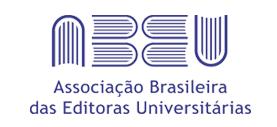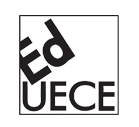MODELOS COGNITIVOS IDEALIZADOS E SUA INFLUÊNCIA NA TRADUÇÃO PARA AS LEGENDAS
Keywords:
Tradução audiovisual, Legendas, Cultura, MCIsAbstract
Este artigo investiga a influência dos modelos cognitivos idealizados (MCIs) na escolha do tipo de linguagem utilizada na tradução de fraseologias e clichês de raiva (palavrões) em inglês para as legendas no português do Brasil. De acordo com Araújo (2004), o uso da linguagem formal é uma estratégia recorrente na tradução para legendas de filmes norte-americanos. Acredita-se que tal recurso seja motivado por questões intrínsecas à sociedade e cultura brasileiras e que, portanto, MCIs exercem um papel importante na sua motivação. Assim sendo, analisaram-se os MCIs subjacentes ao tipo de linguagem escolhida para esse tipo de tradução e investigou-se o impacto de traduções, com diferentes tipos de linguagem (formal e coloquial), em sujeitos habituados a assistir a filmes norte-americanos com legendas. Os dados revelaram que tanto legendas formais quanto legendas informais foram aceitas pelo público. Embora a análise não tenha sido conclusiva, atribui-se o resultado aos MCIs elaborados durante a pesquisa, segundo os quais a linguagem formal se identifica com a escrita e a informalidade e os palavrões com o público adolescente.Downloads
Download data is not yet available.
References
ALÉONG, S. Normas linguísticas, normas sociais: uma perspectiva antropológica. In: BAGNO, M. (Org.). Norma linguística. São Paulo: Edições Loyola, 2001. p.145-174.
ARAÚJO, V. L. S. To be or not to be natural: clichés of emotion in screen translation. In: Gambier, Yves. Meta – Audiovisual translation. Montreal, v.49, n.1, p.161-171, abr. 2004.
BAGNO, M. Norma linguística e outras normas. In: BAGNO, M. (Org.). Norma linguística. São Paulo: Edições Loyola, 2001. p.09-21.
CINTAS, J. D. Audiovisual Translation Today – A Question of accessibility for all. Translating today magazine. London, Issue 4, p.03-05, jul. 2005.
FELTES, H. P. de Moraes. Semântica cognitiva: fundamentos teóricos, interfaces e procedimentos ex-ploratórios gerais em pesquisa qualitativa, 2007. No prelo.
GOTTLIEB, H. Subtitling. In: BAKER, M. Routledge encyclopedia of translation studies. Londres: Routledge, 1998. p. 244-248.
HAUGEN, E. Dialeto, língua e nação. In: BAGNO, M. (Org.). Norma linguística. São Paulo: Edições Loyola, 2001. p.97-114.
LAKOFF, G. Women, fire and dangerous things: What Categories Reveal about the Mind. Chicago and London: The University of Chicago Press, 1987. p.68-76.
MARCUSCHI, L. A. Da fala para a escrita: atividades de retextualização. São Paulo: Cortez, 2001.
NEVES, M. H. de Moura. Língua falada, língua escrita e ensino: reflexões em torno do tema. In: UR-BANO, H. et alii (Orgs.). Dino Preti e seus temas: oralidade, leitura, mídia, ensino. São Paulo, 2001b. p.321-332.
___________. Que gramática estudar na escola? – Norma e uso na língua portuguesa. 2ª ed. São Paulo: Contexto, 2004.
PADLEY, G. A. A norma na tradição dos gramáticos. In: BAGNO, M. (Org.). Norma linguística. São Paulo: Edições Loyola, 2001. p.55-96.
ARAÚJO, V. L. S. To be or not to be natural: clichés of emotion in screen translation. In: Gambier, Yves. Meta – Audiovisual translation. Montreal, v.49, n.1, p.161-171, abr. 2004.
BAGNO, M. Norma linguística e outras normas. In: BAGNO, M. (Org.). Norma linguística. São Paulo: Edições Loyola, 2001. p.09-21.
CINTAS, J. D. Audiovisual Translation Today – A Question of accessibility for all. Translating today magazine. London, Issue 4, p.03-05, jul. 2005.
FELTES, H. P. de Moraes. Semântica cognitiva: fundamentos teóricos, interfaces e procedimentos ex-ploratórios gerais em pesquisa qualitativa, 2007. No prelo.
GOTTLIEB, H. Subtitling. In: BAKER, M. Routledge encyclopedia of translation studies. Londres: Routledge, 1998. p. 244-248.
HAUGEN, E. Dialeto, língua e nação. In: BAGNO, M. (Org.). Norma linguística. São Paulo: Edições Loyola, 2001. p.97-114.
LAKOFF, G. Women, fire and dangerous things: What Categories Reveal about the Mind. Chicago and London: The University of Chicago Press, 1987. p.68-76.
MARCUSCHI, L. A. Da fala para a escrita: atividades de retextualização. São Paulo: Cortez, 2001.
NEVES, M. H. de Moura. Língua falada, língua escrita e ensino: reflexões em torno do tema. In: UR-BANO, H. et alii (Orgs.). Dino Preti e seus temas: oralidade, leitura, mídia, ensino. São Paulo, 2001b. p.321-332.
___________. Que gramática estudar na escola? – Norma e uso na língua portuguesa. 2ª ed. São Paulo: Contexto, 2004.
PADLEY, G. A. A norma na tradição dos gramáticos. In: BAGNO, M. (Org.). Norma linguística. São Paulo: Edições Loyola, 2001. p.55-96.
Downloads
Published
2019-09-20
How to Cite
NASCIMENTO, S. dos S. M. MODELOS COGNITIVOS IDEALIZADOS E SUA INFLUÊNCIA NA TRADUÇÃO PARA AS LEGENDAS. Linguagem em Foco Scientific Journal, Fortaleza, v. 4, n. 1, p. 51–66, 2019. Disponível em: https://revistas.uece.br/index.php/linguagememfoco/article/view/1894. Acesso em: 15 dec. 2025.
Issue
Section
Articles
License
Copyright (c) 2019 Simone dos Santos Machado Nascimento

This work is licensed under a Creative Commons Attribution 4.0 International License.
Authors who publish in Linguagem em Foco Scientific Journal agree to the following terms:
- Authors retain the copyright and grant the journal the right of first publication. The articles are simultaneously licensed under the Creative Commons Attribution License which allows sharing the work with an acknowledgement of its authorship and initial publication in this journal.
- The concepts issued in signed articles are the absolute and exclusive responsibility of their authors. Therefore, we request a Statement of Copyright, which must be submitted with the manuscript as a Supplementary Document.
- Authors are authorized to make the version of the text published in Linguagem em Foco Scientific Journal available in institutional repositories or other academic work distribution platforms (ex. ResearchGate, Academia.edu).

























